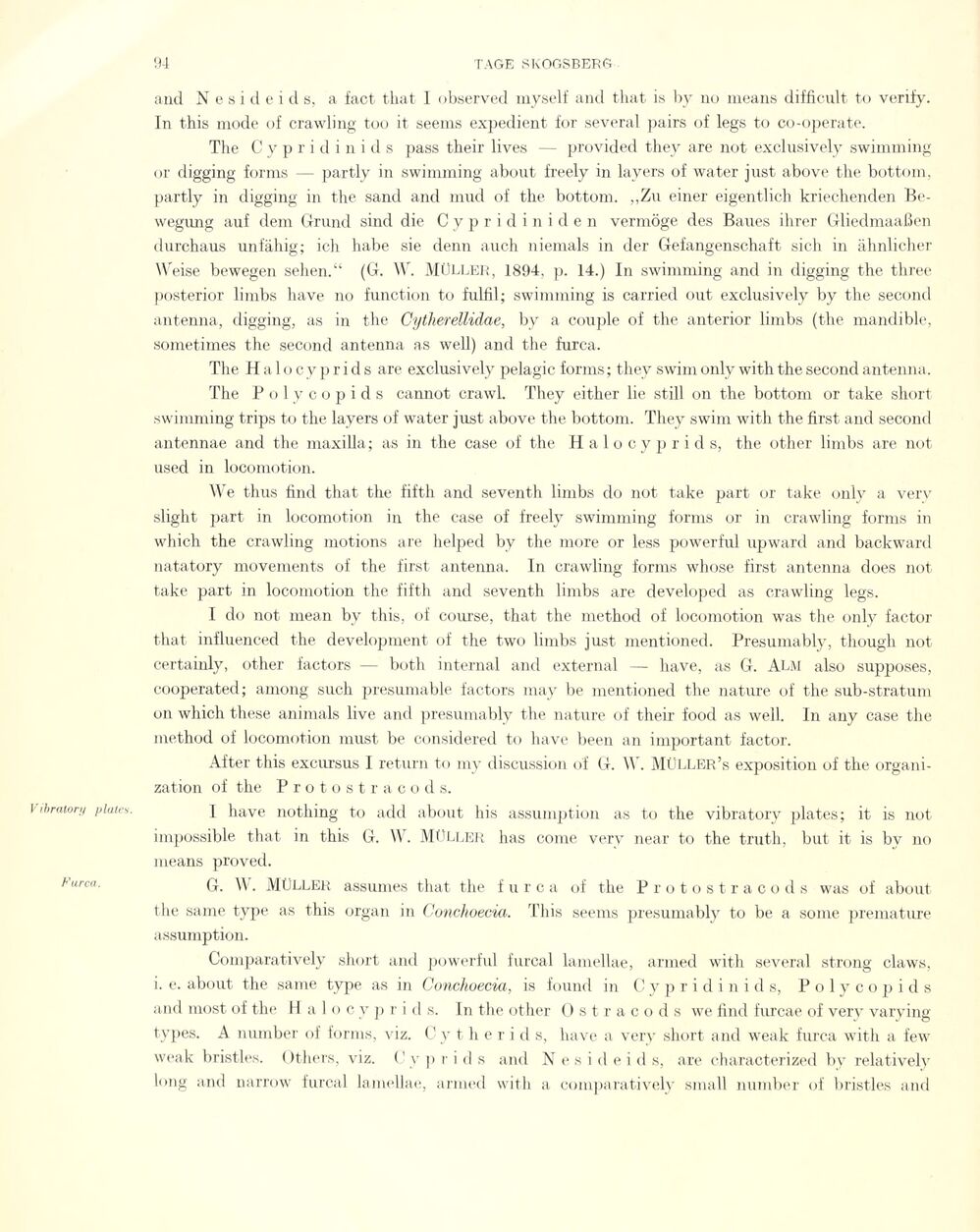
Full resolution (JPEG) - On this page / på denna sida - Sidor ...

<< prev. page << föreg. sida << >> nästa sida >> next page >>
Below is the raw OCR text
from the above scanned image.
Do you see an error? Proofread the page now!
Här nedan syns maskintolkade texten från faksimilbilden ovan.
Ser du något fel? Korrekturläs sidan nu!
This page has never been proofread. / Denna sida har aldrig korrekturlästs.
ibraton/ platen.
Furen.
and Nesideids, a faet that 1 observed myself and that is by nu means difficult to verify.
In this mode of crawling too it seems expedient for several pairs of legs to co-operate.
The Cypridinids pass their lives — provided they are not exclusi vely swimming
or digging forms — partly in swimming about freely in lavers of water just above the bottom,
partly in digging in the sand and mud of the bottom. ,,Zu einer eigentlich kriechenden
Bewegung auf dem Grund sind die Cypridi niden vermöge des Baues ihrer Gliedmaaßen
durchaus unfähig; ich habe sie denn auch niemals in der Gefangenschaft sich in ähnlicher
Weise bewegen sehen.“ (G. W. MÜLLER, 1894, p. 14.) In swimming and in digging the three
posterior limbs have no function to fulfil; swimming is carried out exclusively by the second
antenna, digging, as in the Cytherellidae, by a couple of the anterior limbs (the mandible,
sometimes the second antenna as well) and the furca.
The Halocyprids are exclusively pelagie forms ; they swim only with the second antenna.
The Polycopids cannot crawl. They either lie still on the bottom or take short
swimming trips to the layers of water just above the bottom. They swim with the first and second
antennae and the maxilla ; as in the case of the Halocyprids, the other limbs are not
used in locomotion.
We thus find that the fifth and seventh limbs do not take part or take only a very
slight part in locomotion in the case of freely swimming forms or in crawling forms in
which the crawling motions are helped by the more or less powerful upward and backward
natatory movements of the first antenna. In crawling forms whose first antenna does not
take part in locomotion the fifth and seventh limbs are developed as crawling legs.
I do not mean by this, of course, that the method of locomotion was the only factor
that influenced the development of the two limbs just mentioned. Presumably, though not
certainly, other factors — both internal and external — have, as G. Alm also supposes,
coopérated; among such présumable factors may be mentioned the nature of the sub-stratum
on which these animais live and presumably the nature of their food as well. In any case the
method of locomotion must be considered to have been an important factor.
After this excursus I return to my discussion of G. W. MÜLLER’s exposition of the
Organization of the Protostracods.
1 have nothing to add about his assumption as to the vibratory plates; it is not
impossible that in this G. W. MÜLLER has come very near to the truth, but it is by no
means proved.
G. W. Müller assumes that the fure a of the Protostracods was of about
the same type as this organ in Conchoecia. This seems presumably to be a some prématuré
assumption.
Comparatively short and powerful furcal lamellae, armed with several strong claws,
i. e. about the same type as in Conchoecia, is found in Cypridinids, Polycopids
and most of the H a 1 o c y p r i d s. In the other 0 stracods we find furcae of very varying
types. A number of forms, viz. C y t h eri d s, have a very short and weak furca with a few
weak bristles. ( fibers, viz. (’yp rid s and Nesideids, are characterized by relatively
long and narrow furcal lamellae, armed with a comparatively small number of bristles and
<< prev. page << föreg. sida << >> nästa sida >> next page >>